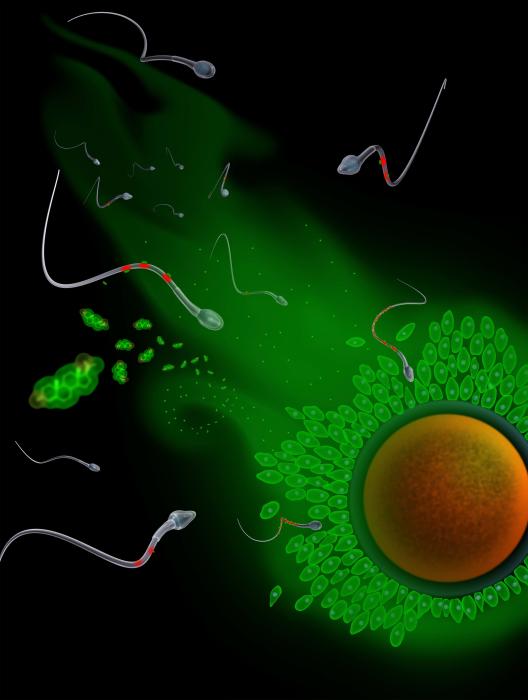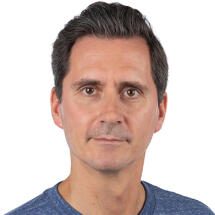Prof. Dr. Timo Strünker
Sensory Signal Transduction in Human Sperm

Biophysics
Signal Transduction
Molecular Physiology
Sperm use various chemical and physical cues to locate the egg. Sperm from marine invertebrates rely on chemotaxis, whereas for mammalian sperm, chemo-, thermo-, rheotaxis, or combinations thereof have been proposed. The signaling pathways and molecules in sperm are similar to those in sensory neurons that detect for example mechanical force, odors, or light. By the kinetic stopped- and quenched-flow technique and patch-clamp recordings, combined with fluorescent ion- and voltage-sensitive indicators, we study sensory signal transduction in human, mouse, and sea urchin sperm. In particular, we are interested in the ion channels, receptors, and cellular messengers that allow sperm to register chemical cues released by the egg as well as oviductal flow velocities and temperature gradients. We are investigating the physiology of CatSper Ca2+ channels, sNHE Na+/H+ exchangers, Slo3 K+ channels, Hv1 voltage-gated H+ channels, and the plasma membrane Ca2+-ATPase PMCA4. In particular, we want to elucidate the interplay of CatSper, Slo3, and PMCA4 during the navigation of sperm across the female genital tract.

Vita
- 1997 - 2002: Studies of Biology (Diplom-Biologe) at the University of Cologne
- 2002 - 2005: PhD at the Research Center Jülich, Germany (PhD in Biochemistry, University of Cologne)
- 2005 - 2006: Post-Doctoral Fellow at the Research Center Jülich, Germany
- 2006 - 2008: Lab Head with Grünenthal GmbH, Germany
- 2008 - 2015: Group Leader at the Research Center Caesar (Bonn), an Associate of the Max Planck Society
- Since 2015: Professor at the Center of Reproductive Medicine and Andrology (CeRA), Münster
Selected references
Schiffer C, Müller A, Egeberg DL, Alvarez L, Brenker C, Rehfeld A, Frederiksen H, Wäschle B, Kaupp UB, Balbach M, Wachten D, Skakkebaek NE, Almstrup K, Strünker T (2014) Direct action of endocrine disrupting chemicals on human sperm. EMBO Reports 15:758-65
Brenker C, Zhou Y, Müller A, Echeverry FA, Trötschel C, Poetsch A, Xia XM, Bönigk W, Lingle CJ, Kaupp UB, Strünker T (2014) The Ca2+-activated K+ current of human sperm is mediated by Slo3. eLife 3:e01438
Seifert R, Flick M, Bönigk W, Alvarez L, Trötschel C, Poetsch A, Müller A, Goodwin N, Pelzer P, Kashikar ND, Kremmer E, Jikeli J, Timmermann B, Kuhl H, Fridman D, Windler F, Kaupp UB, Strünker T (2014). The CatSper channel controls chemosensation in sea urchin sperm . EMBO Journal 34:379-92.
Brenker C, Goodwin N, Weyand I, Kashikar ND, Naruse M, Krähling M, Müller A, Kaupp UB, Strünker T (2012) The CatSper channel: a polymodal chemosensor in human sperm. EMBO Journal 31:1654-65
Strünker T, Goodwin N, Brenker C, Kashikar ND, Weyand I, Seifert R, Kaupp UB (2011) The CatSper channel mediates progesterone-induced Ca2+ influx in human sperm. Nature 471:382-6
Links
